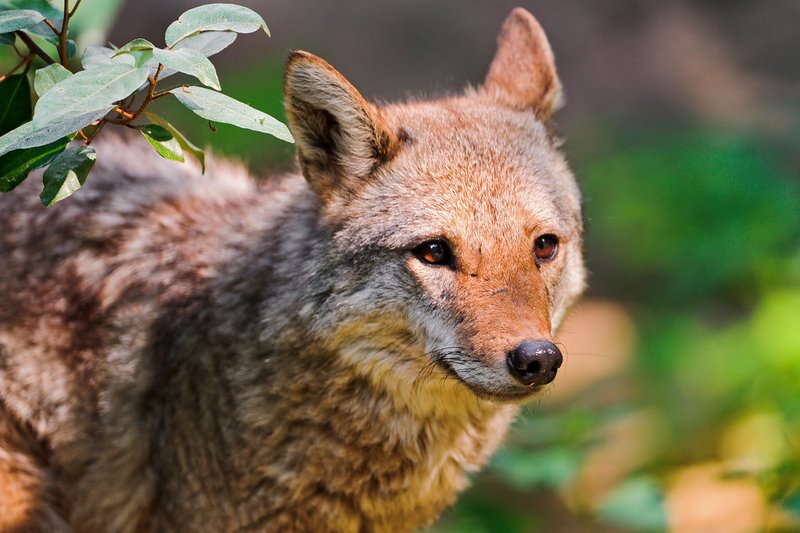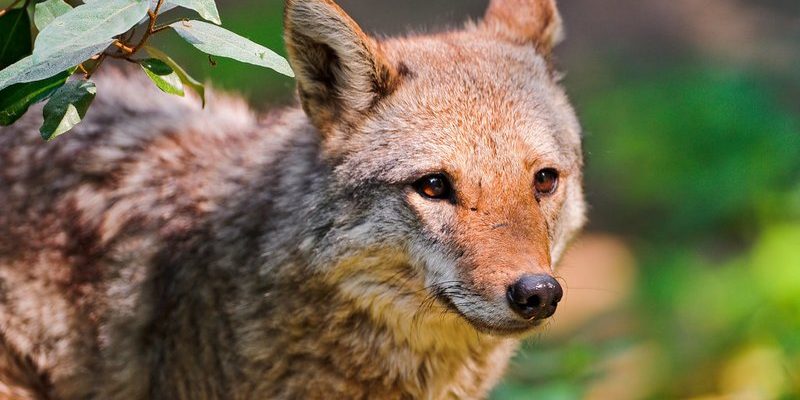
Think of it like this: spotting a coyote is like meeting a new neighbor while taking a stroll. It can be surprising, and you might not know how to react at first. You want to be friendly but also cautious about how you engage. Coyotes, while generally avoiding humans, can show up when you least expect them—especially in rural areas or parks that border their natural habitats. So, how do you handle it when you encounter one?
Let’s break down everything you need to know about what to do if you find yourself face-to-face with a coyote in the wild. This isn’t just about reacting in the moment but also understanding these animals a bit better so you can feel equipped for future encounters.
Understanding Coyotes: Their Behavior and Habitat
Coyotes are fascinating creatures native to North America. They adapt well to various environments, from rural landscapes to urban areas. They’re usually small to medium-sized, about the size of a dog, and they often travel in pairs or small family groups.
Understanding their behavior is key to knowing how to react if you see one. Coyotes are typically shy and will avoid humans if given the chance. However, if they feel threatened or cornered, they may act defensively. That’s why it’s important to learn about their body language. If a coyote stands its ground, stares at you, or shows its teeth, it might be feeling challenged.
Recognizing their habitat can also give you an edge. Coyotes are most active during dawn and dusk. If you’re hiking or camping during these times, be especially vigilant. They are incredibly resourceful and can thrive near human populations, scavenging for food. This means that if you’re out in the wild, especially near populated areas, the chance of running into a coyote increases.
Stay Calm: Your First Reaction Matters
So, you see a coyote. What do you do first? Stay calm. It might be your instinct to panic or run, but that’s the last thing you want to do. Coyotes are creatures of curiosity, and sudden movements can trigger their chase instinct. Instead, take a moment to assess the situation.
Here’s the thing: if you come across a coyote, take a deep breath and remember that it’s more afraid of you than you are of it. Slow and steady movements are key. Step back slowly, maintaining eye contact with the coyote. This shows you’re not afraid, and it lets them know you’re aware of their presence.
If you’re with others, gather them calmly as well. Making noise is fine; you want to be assertive without being aggressive. You might talk loudly or clap your hands to assert your presence. Sounding large and intimidating can sometimes encourage the coyote to wander off.
What to Do If a Coyote Approaches You
If a coyote comes closer than you feel comfortable with, it’s time to take a more active approach. The goal here is to discourage the coyote from getting too close while keeping yourself safe.
Start by making yourself look larger. Raise your arms or hold out your backpack. Yelling can also be effective. A firm, commanding voice can often scare them away. Think of it as being the “big boss” in the room.
Never run or turn your back on the coyote. This might trigger a chase response, which can lead to danger. Instead, back away slowly while continuing to make noise. If it approaches too closely, you may need to throw objects (not directly at the coyote) to persuade it to leave.
Remember, the goal is not to provoke the animal but to reinforce the idea that humans are not prey. With persistence and confidence, you can encourage the coyote to retreat.
What Not to Do: Avoid Common Mistakes
When you encounter a coyote, it’s just as important to know what not to do as it is to know what to do. Here are some common mistakes you want to avoid:
- Don’t run away: This can trigger a chase response, and you definitely don’t want to be in a situation where a coyote is pursuing you.
- Don’t feed them: This is a biggie. Feeding coyotes can encourage them to lose their fear of humans, which can lead to more aggressive behavior.
- Don’t corner them: If a coyote feels trapped, it may act defensively. Always give them an escape route.
- Don’t provoke: Making aggressive sounds or actions can escalate the situation. Remain calm and assertive, but not threatening.
Each of these actions can influence a coyote’s behavior in a negative way, putting both you and the animal at risk. Being aware of these pitfalls helps you navigate encounters in a safer manner.
When to Seek Help: Recognizing Dangerous Situations
Most coyote encounters are harmless and can be resolved with simple actions. However, there are situations when it’s best to seek help from local wildlife authorities. Here are a few signs that you might be facing a more serious issue:
1. Aggressive Behavior: If the coyote shows signs of aggression, like growling, lunging, or appears to be stalking, it’s not a typical encounter. This situation requires immediate attention.
2. Frequent Sightings: If you notice coyotes roaming near populated areas frequently, this could signal a problem. Coyotes should generally avoid humans, so a change in their behavior might indicate they need to be addressed.
3. Sick or Injured Animals: If you see a coyote that looks sick, injured, or excessively thin, it’s worth reporting. Ill animals can behave unpredictably and should be handled by professionals.
If you find yourself in any of these situations, don’t hesitate to contact local wildlife services. They’ll know how to handle the situation better than anyone else.
Tips for Preventing Coyote Encounters
While it’s impossible to completely avoid wildlife, there are some proactive steps you can take to reduce your chances of encountering a coyote. Here are some tips to keep in mind:
- Keep food secured: If you’re camping or hiking, make sure food is stored properly. Coyotes are attracted to garbage or scraps.
- Travel in groups: Coyotes tend to avoid larger groups. If you’re hiking, try to stick with friends or family.
- Stay on marked trails: This minimizes your chances of accidentally wandering into coyote territory, especially during their active hours.
- Leash your pets: If you’re in areas where coyotes are present, keep your pets on a leash to prevent them from straying too far.
By taking these simple precautions, you can enjoy your time in nature while minimizing the chance of an unexpected coyote encounter.
Encountering a coyote in the wild can be an exciting yet nerve-wracking experience. Understanding how to react can not only keep you safe but also promote a positive interaction between humans and wildlife. When you stay calm, assertive, and informed, you can handle these encounters gracefully.
Remember, coyotes are an essential part of our ecosystem. They help control rodent populations and maintain the balance of nature. By respecting their space and understanding their behavior, you contribute to a harmonious coexistence.
So the next time you’re out in the wild, keep an eye out for those clever canines and know that a little knowledge can go a long way in making your outdoor adventures safe and enjoyable.

